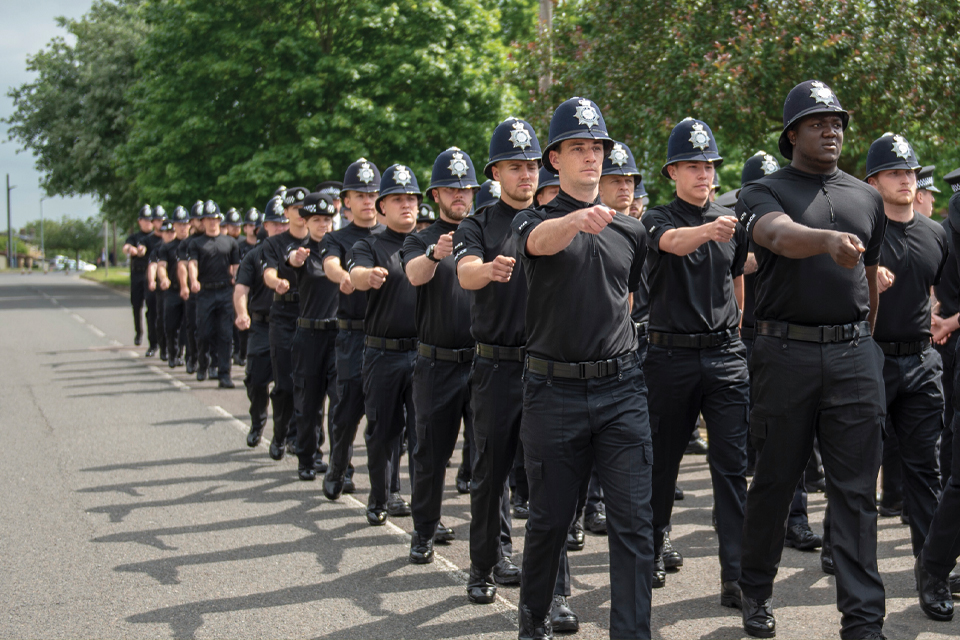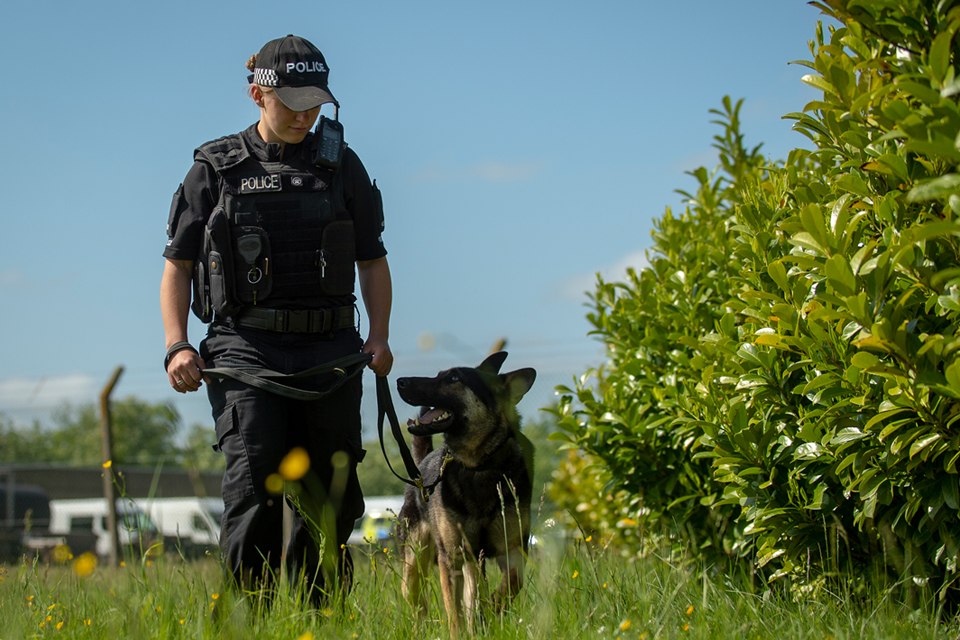Following the merger of the former Airforce Department, Army Department and Admiralty Constabularies on 1 October 1971, this year marks the 50th anniversary of the MDP.
For half a century, the MDP has had a constant presence at many defence sites and establishments, including HM Naval Base Portsmouth. However, there undoubtedly remains some lack of awareness and understanding on the role of the force, which has previously been described as one of the department's 'best kept secrets.'

Looking back… MDP at Whitehall. Crown copyright.
Over the coming weeks, during the lead up to the anniversary on 1 October, the MDP will be looking back, looking ahead and celebrating and showcasing the present force, which is marketed as 'a force with a difference.'
So, what is different about the MDP and how does its work support the Defence purpose and national security?
MDP explained
Who?
-
The Ministry of Defence Police, more commonly known as the MOD Police or the MDP is made up of around 2,900 police officers and 260 non-uniform, civilian staff.
-
A national civilian police force, serving the MOD and other UK Government departments and US Visiting Forces.
-
The MDP's legal status and jurisdiction are defined in statute by the Ministry of Defence Police Act 1987, as amended by the Anti-Terrorist Crime and Security Act 2001.

MDP new recruits marching at pass out parade. Crown copyright.
What?
The Departmental Mandate and Statement of Requirement for the MDP defines its purpose within defence and the policing capabilities the force maintains, by:
- delivering unique specialist policing to protect sites, people and assets essential to defence and national infrastructure
- providing a highly visible and proactive policing presence to reassure stakeholders, customers and local communities
- deploying people and resources effectively and efficiently and to national policing standards
How?
As an enabling organisation within the Defence Operating Model, through provision of operational policing and protective security services, the MDP enables delivery of the following defence tasks:
- Defence, security and resilience of the UK and its overseas territories
- Nuclear deterrence and the defence nuclear enterprise
- Strategic intelligence and the global defence network
- Overseas defence activity
- Promote UK prosperity and civil society
In support, the MDP's primary policing outputs are focused on:
- Nuclear Policing: provision of specialist armed policing services that contribute to the protection of the UK's Strategic Nuclear Deterrent
- Territorial Policing: provision of specialist armed policing services that contribute to the protection of defence and UK Critical National Infrastructure sites, people and assets
- National Counter Terrorist Response: contribution towards the UK's national armed policing response to major incidents
- Crime and Intelligence: collation and dissemination of criminal and security intelligence and, investigation and detection of fraud, corruption, and the theft of, or criminal damage to, Defence equipment and assets
Where?
Located at sites across the UK, including:
- Clyde, Portsmouth and Devonport naval bases
- Atomic Weapons Establishment sites in Aldermaston and Burghfield
- Government Communications Headquarters (GCHQ)
- Defence HQ in Whitehall
- US Visiting Forces' bases
- Defence munitions establishments and various other Defence sites
Take a look at MDP station locations.
Did you know?
- Authorised Firearms Officer roles make up the majority of posts in the MDP, with most officers carrying firearms in the daily course of their duties. All new recruits are trained to be AFOs from the beginning of their careers with the MDP.

MDP firearms training. Crown copyright.
-
The primary focus of the MDP's work is armed security and the protection of critical defence sites and assets but, there is much more that they do. This includes a range of specialisms from dog handling to marine policing, from investigating crime to public order, from community policing to protester removal.
-
The MDP has the largest marine policing capability and second largest police dog capability in the UK.
-
Although the MDP is not a Home Office police force, officers work closely with their colleagues in police forces across the UK (including Police Scotland and the Police Service of Northern Ireland). They can also provide mutual aid and specialist policing support to other forces. For example, the MDP recently supported the policing operation for the G7 Leaders' Summit.
-
Counter terrorism policing is an important part of the MDP's role. The Force can, and has been, called upon to support the national policing response to major terrorist incidents, as part of the national Strategic Armed Policing Reserve and the MOD's commitment to Operation Temperer. The MDP also delivers and supports national counter terrorist policing initiatives, such as Project Servator, Prevent and Action Counters Terrorism (ACT).
-
The MDP is not 'military police'. Unlike Service Police colleagues, with whom the MDP work closely, their officers' jurisdiction can extend outside the Defence estate, and MDP officers have full powers and privileges of constables, identical to other civil police officers in the UK.
What's next?
This snapshot will be followed by a closer look at force capabilities and history, with personal stories and reflections from the people of the MDP, on the MDP's Facebook and Twitter pages: search #MDP50.
Filming is planned to take place with the British Forces Broadcasting Service (BFBS) during the coming weeks and we look forward to sharing with you further insight on life in the MDP.

MDP has the second largest police dog capability in the UK. Crown copyright.
The MDP's next recruitment campaign will open for applications in October. If you're looking to join MDP, you can register your interest to apply now, so that pre-screening can begin. Visit mod.police.uk f






